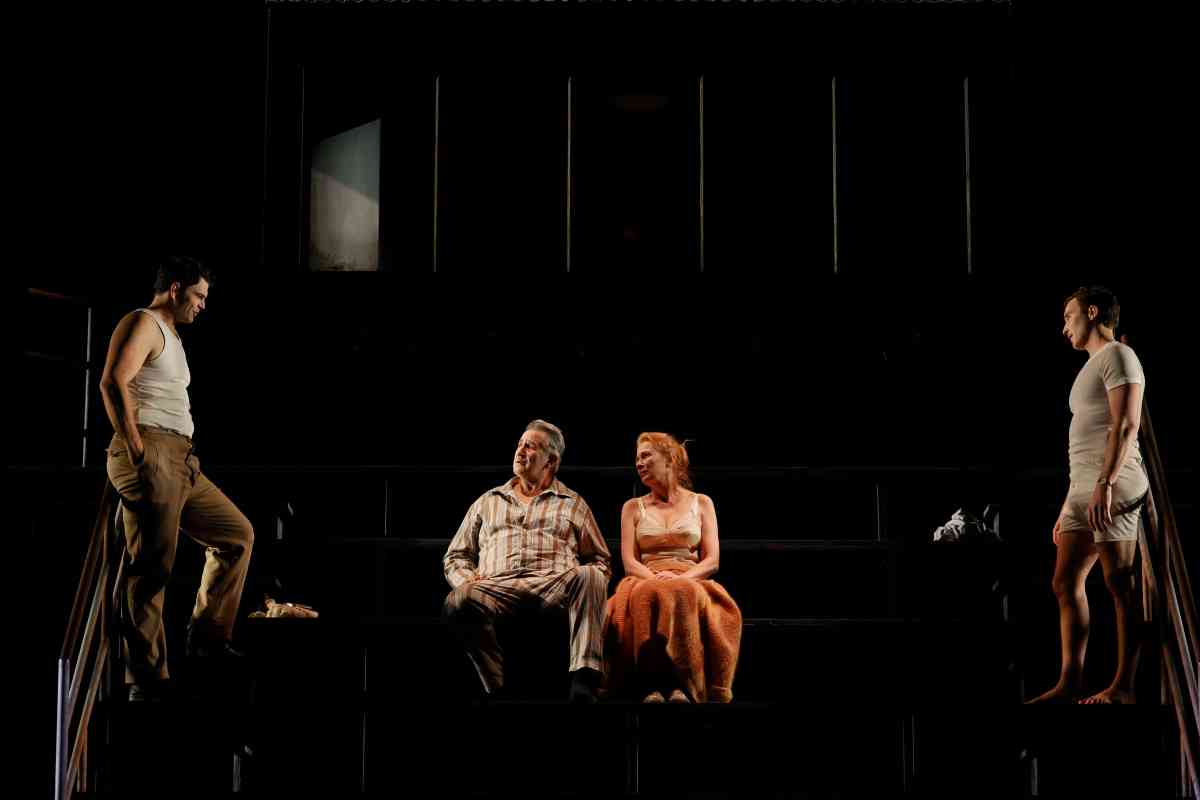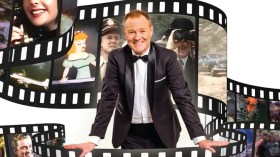The multi-garlanded Anthony LaPaglia plays the eponymous role in Arthur Miller’s Pulitzer-winning play about an everyman striving to grow and harvest the fruits of capitalist success. That he ultimately fails is, of course, what makes Death of a Salesman both tragic and affecting. It was first staged in 1949 on Broadway and has since boasted many iterations across the globe – both theatrically and on film, a testament to the universality of its themes.
Split into two acts, and set in the late 1940s in Brooklyn, New York, it canvasses one family’s economic struggles, a microcosm of the larger picture of the working poor trying to eke out a living and flailing against external market conditions outside their control. It seems particular resonant in today’s climate, with millions beleaguered by the rising cost of living and interest rates.
How can one not empathise with Willy Loman, an exhausted 63-year-old travelling salesman whose salary has been stripped, who has to subsist on commissions, and is facing redundancy? We never get to find out exactly what product he is trying to offload, but ultimately he is selling himself, and this time no one is buying. Whatever winsome charm he had that once served him no longer has any purchasing power.
Adelaide-born but US-based LaPaglia returns home to make his mainstage debut in Australian theatre, with director Neil Armfield assembling a sterling support cast revolving around the hapless Loman. His ultimate death is, of course, a direct and unvarnished metaphor for the death of the American Dream. Loman’s increasingly elusive grasp on reality means that past and present co-exist and the narrative plays on his fragmented memories as he inevitably succumbs to a hallucinatory nervous breakdown.
The director has been quoted as saying, ‘With America in free fall – a population armed and divided by anger, the catastrophe of Trump, a century of politicians bowing to Big Oil, Big Tobacco, Wall Street and the gun lobby – there has never been a better time to consider Arthur Miller’s seminal classic…’ His words seem to pre-empt a modern reclassification of Salesman, to stage it to reflect current socio-political mores and yet this production keeps it safe, without changing timelines or introducing any anachronistic props. It’s a faithful and reverential treatment of the original text in its original setting. (I wonder, though, how a 21st century Loman would translate? A pizza delivery driver?)
There has been a frenzy of pre-publicity touting LaPaglia’s involvement, but fortunately he lives up to expectations. Though best known for his three-decades’ worth of celluloid work, the actor’s deep-throated, gravelly voice projects strongly across Melbourne’s Her Majesty’s Theatre; his presence is commanding. Salesman may be an ensemble play, but Loman’s character is pivotal and undergirds the entire narrative. LaPaglia’s performance embodies this anti-hero well, moving from irascible self-delusion to dispirited vulnerability in a heartbeat. The pendulum swings between hope and despair are harrowing to watch. There is both fury and passion in LaPaglia’s Loman, but perhaps the most powerful moments are when he is alone on stage, half muttering to himself and lost to dreams of yesteryear.
He is well-supported by the rest of the team, with a particular nod to Alison Whyte who plays Loman’s long-suffering wife, Linda. Her fierce love for her husband both ennobles him and enables his shortcomings and Whyte’s depiction is heart-full, and desperately sad. As Biff, the rudderless elder Loman son, a burly Josh Helman is also well-cast. Yet to find his calling, moving from one failed project to the next (his plight scarily resembling today’s gig economy), Biff is quick to rage, as tempestuous as his father. Their love-hate, push-pull relationship is at the core of Salesman.
Guilt, frustrated ambition and projected expectations drive a wedge between them. Miller wrote about toxic masculinity before the words were even in currency. Rounding out the family is feckless Happy (Sean Keenan), the younger Loman son, who means well, but whose womanising, self-aggrandising ways also reflect the habits of Willy, whose own moral compass is shaky, no matter how hard he tries to rationalise his weaknesses.
Also of note are the solid performances of Steve Bastoni, who takes on the role of Loman’s best and only friend Charley, and Richard Piper, who plays older brother Ben. These two successful businessmen are the foils on which Loman models himself and fails to emulate, a life-long situation that exacerbates his feelings of inadequacy. Ben’s refrain, ‘When I was 17 I walked into the jungle, and when I was 21 I walked out. And by God I was rich’ continues to haunt Loman as a barometer of mercurial wealth denied him as his mind continues to become more raddled. Once again themes of exploitation of the earth’s resources and frontier-building colonial ambitions prove the prescience of Salesman and its continuing relevance to today’s audience.
Dale Ferguson’s set design is simple and effective; the entire action takes place in the foreground of the bleachers in a football stadium with a commentary box at the top. The cast, when not performing, sit inert and wait their turn to come down. Not only does this set bring to mind the site of Biff’s former sporting glory, but also means that aside from some tables and chairs, there is no time-consuming bumping in and out of unwieldy props that will harm the pacing and momentum of the play.
Costuming too by Ferguson and Sophie Woodward is kept to a minimum without flourish. All the characters are dressed in 40s period clothing, in earthy tones, with the exception of the woman with whom Loman has a hotel fling, who’s symbolically robed in scarlet red. Lighting by Niklas Pajanti is similarly subdued, with characters in the bleachers kept in half-dark and the spotlight only on those speaking. Armfield’s direction is for a clean, unfussy stage, all the better to highlight Miller’s words and the projections of his cast – and it works. There are no unnecessary distractions for the eye or ear.
Read: Book review: Body Friend, Katherine Brabon
Salesman has been touted as one of the greatest plays of the 20th century, so mounting this production is a failsafe, critic-proof venture. Even 75 years later, Miller’s eviscerating examination of the failure to keep apace with the wheels of change, his canvassing of intergenerational trauma between fathers and sons and the dismantling of the mythology of the American Dream still has evergreen power.
Death of a Salesman
Director: Neil Armsfield
Set Design: Dale Fergusion
Costume Design: Dale Ferguson and Sophie Woodward
Lighting Design: Niklas Pajanti
Music: Alan John
Sound Design: David Greasley
Cast: Anthony LaPaglia, Alison Whyte, Steve Bastoni, Richard Piper, Josh Helman, Sean Keenan, Louisa Mignone, Elizabeth Blackmore, Simon Maiden, Grant Piro and Manali Datar
Price range: $69 – $239
Death of a Salesman will be performed until 15 October 2023.
Actors:
Director:
Format:
Country:
Release:





